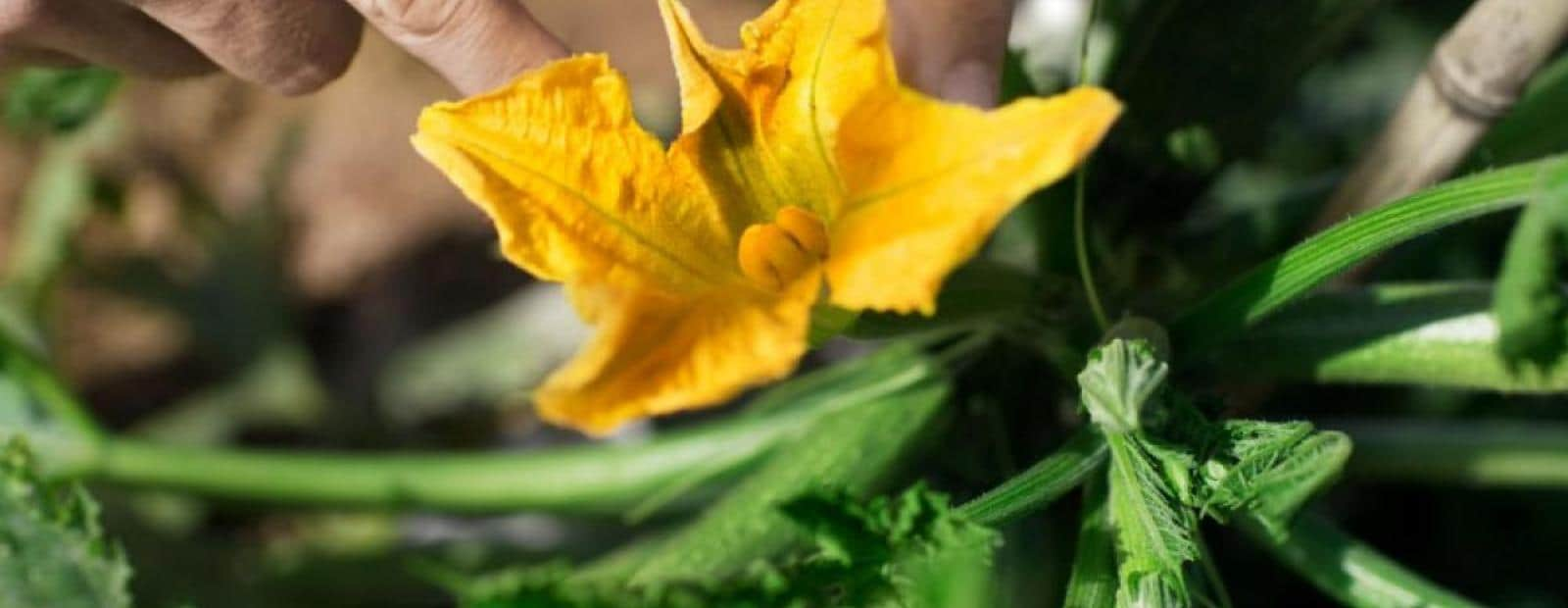Human Safety
Like all other chemicals, pesticides can cause ill effects in humans if they are not used responsibly. Determining how our pesticide products can be used safely is the main responsibility of the Human Safety department in Bayer.
The use of pesticides is an important tool to protect plants from diseases and pest infestations that can threaten the safety and secure supply of our food. The recent plague of locust in Africa and historical events of large numbers of people sickened by food contaminated with fungi (e.g. Ergot in cereals like rye and wheat) and other natural toxins (e.g. Aflatoxins in peanuts) emphasize the importance of pesticide use to maintain food safety and food security.
To be able to ensure human safety, we first need to understand what the potential risks to human health are when exposed to pesticides. To assess the potential risks, we evaluate both hazard and exposure.
Do you know what the difference is between a hazard and risk?
What do hazard, exposure, and risk mean in the context of human safety and pesticides?
To understand the potential risk of using a specific crop protection product, we need to understand at what exposure level (dose) the chemical can be hazardous (toxicity).
All chemicals can be toxic if the exposure is high enough. Too much sugar can cause nausea, excitation, and an increase in heart rate and too much salt can cause dehydration, elevated blood pressure, and irregular heartbeats. We call this acute or direct toxicity.
The period of time you get exposed to a product also matters. If you eat a lot of sugar each day it might not harm you directly but could cause diseases like diabetes or obesity in the long run. We call this chronic toxicity.
In the same way, it is important to know how and when people might become exposed to pesticides, and in what quantity. We also need to know what effects can be caused by high exposures.
For human safety, pesticides are required by law to undergo more than 50 laboratory studies to assess their toxicity.
Effect Level Testing
Toxicity is assessed by looking at:
- different routes of exposure (oral, skin, and inhalation);
- different lengths of time (1-7 days (acute); 14-90 days (subchronic) and 1-2 years (chronic — the lifespan of test species); and
- different exposure levels
All studies are designed to look at effects found at different doses (exposure levels). Most studies have a control (no exposure), low, medium, and high doses. The low dose is typically 100 or more times higher than real exposures people may experience from the use of pesticides according to the label instructions, and often shows no effects. This helps us determine a safe level for risk assessment, i.e., the level of exposure (dose) where there will be no adverse effects.

Exposure to high doses by oral, skin, and inhalation assess untypically high exposure in exceptional scenarios. The tests also look for skin and eye irritation and potential allergic reactions.

Tests using computer programs that predict toxicity based on chemical structures (in silico), cell culture (in vitro), and animal studies (in vivo) are used to assess the potential for DNA damage. This is important, as some diseases such as cancer can result from damage to genetic material (e.g. DNA and chromosomes).

Toxicity resulting from repeated exposure to a chemical are also assessed to understand effects on all major organs (e.g. liver, kidney, spleen, brain, nervous system, bones, blood, reproductive organs, gastrointestinal system and muscles). This is important for farmers, pest control operators and others who use pesticides on a regular basis.

Special studies are conducted in animals to assess the potential effects from pesticide exposure during pregnancy, breast feeding and over multiple generations. These studies are specifically designed to assess fertility, hormonal effects, fetal development and effects that could be passed from parent to child.

These studies evaluate long-term exposures and the potential for a chemical to cause tumors.

In addition to the studies that look at general toxicity, further testing to assess specific biological systems can be conducted. These include tests on the endocrine (hormones needed for sexual development and general health), immune, and nervous systems in adult and developing animals.

It is important to understand how a chemical enters the body, where it goes, what happens to it, and how the body eliminates it. Metabolism studies look at how a chemical is absorbed, distributed, metabolized (broken down), and eliminated. These studies are often referred to as ADME studies. Metabolism studies are carried out in animals, plants, soil, and water, so we know what people may be exposed to and how the chemical or breakdown products of the chemical known as metabolites work.
Exposure Assessment and Modelling
In order to complete our assessment of risk to human safety, we not only need the hazard (toxicity) information, but we also need to understand human exposure. Humans can be exposed to pesticides through:
- use (mixing/loading and applying pesticides) on the farm, in the garden, or in the home;
- possible residues in drinking water and food or
- from medical use for fungal infections (e.g. athlete’s foot or toenail infections) and pests (e.g. head lice or scabies)
Studies are conducted that monitor exposure to farmworkers, residents, bystanders, and consumers, as well as residues on treated crops, soil, air, and ground or surface water. In addition, many countries monitor food in grocery stores and imported from other countries in efforts to enforce good agricultural practices.
If the predicted concentrations show a potential risk, mitigation measures are mandatory to reduce the exposure. In such a case, models are used to predict the reduction of exposure through changes in labels, requirements in protective equipment, and other stewardship actions. You can learn more about mitigation below.
Human Safety Assessment
Based on the knowledge derived from the toxicology, metabolism, and exposure studies, we derive reference values (e.g. Acceptable Operator Exposure Level (AOEL), Acute Reference Dose (ARfD) and Acceptable Daily Intake (ADI)) that are used to conduct human health risk assessments for our products to determine how they can be used safely.
In our assessments, we compare toxicity study information about exposure levels that may cause effects (dose-response) and predicted concentrations people may be exposed to from all possible sources (food, water, air, direct contact during handling of the product). The combination of hazard and exposure informs us about potential risk (remember the shark — the shark is in the deep water, but if you are onshore or in shallow water, your risk of harm is small).
Risk assessment approaches based on regulations can vary from country to country, but at Bayer, we base our assessments on the most robust science-based methods that meet or exceed these standards. All Bayer products must pass our safety standards before we submit them for registration, even in countries where no such regulations are in place. For older products that may have been registered for a long time, we systematically assess over time and mitigate any use that does not meet our current standards. As we continually evolve and improve our standards based on the state of the art of available science, our assessments are part of the lifecycle management of our portfolio of products.
Two main risk assessments are conducted in human safety to account for people’s most significant routes of exposure: dietary (1) and operator exposure (2).

An evaluation is conducted for the expected exposure via residue levels in food, animal products, and water. Every product is tested by applying the pesticide to crops using labeled instructions and analyzing for residues in food, animal feed, and animal products (e.g. meat, milk, and eggs). In addition, models or monitoring studies are used to look at potential residues in surface and groundwater that could be used for drinking water.
These estimates are very conservative as they do not account for water treatment or filtering systems. Any detected residues help to quantitate potential exposure from the diet. The total exposure is estimated by using consumption data (what and how much people eat and drink), which best represents the country or region being assessed and their multiple potential consumers — children, adults, or elderly people.
In other words, as diets for people living in Japan are likely very different from those living in Mexico, we look to use official government consumption databases to match the population in the risk assessment. We then compare the estimated total exposure to the safe level determined from the toxicity studies (these safe levels are at least 100-fold below the lowest dose that caused no adverse effect, ensuring there is a large margin of safety).

Operators and farmers, who apply plant protection products, potentially face the highest risk of significant contamination. Therefore, it’s important to ensure that PPP is applied safely. For operator safety (e.g. safety of individuals applying a PPP), Bayer follows the FAO code of conduct1 and its rationale to determine risk for operators applying a plant protection product.
Based on this guidance, we assess both hazard and exposure using sufficiently conservative, but still realistic information to reliably determine potential operator risk.
We then use risk management tools like personal protective equipment (PPE) to ensure operator safety.
The following figure illustrates in three pillars how we apply our operator safety standards to our products.
- Safety data collection: We conduct tests to understand the toxicity properties of our products to characterize their hazard and behavior in the body. In addition, we determine routes of exposure and how a substance can enter the human body (dermal absorption/inhalation/oral).
- Exposure and risk assessment principles: We conduct studies to determine exposure and gather information to understand local practices, equipment used, operator behavior, and potential sources of exposure to our products during their application. The more data we can collect from actual field use, the more reliable our assessments of risk.
- Risk management activities: We don’t just add protective equipment to our labels, we ensure that the necessary protections are available and affordable and consider if they will be used in an appropriate manner. By accounting for local practices and environments, we make sure our risk management is realistic and appropriate.
Implementing the Human Safety Assessment
If a product passes the human safety assessment, it can be used without unacceptable risk. However, this does not mean it can be used in any possible way — the human safety assessment also indicates the conditions of safe use. Typical conditions would be that the product must only be applied at certain times (e.g. minimum days before harvest), only at certain maximum rates, or only in a certain agricultural context. Therefore, after completion of the safety assessment, there are several more steps to define these use conditions and to make sure that they are fulfilled in practice.

Based on the results of our research, we devise measures to control (eliminate or reduce) any potential risks from exposure to our products. Mitigation measures may include wearing gloves during mixing, loading, and application; restricting reentry into treated fields until the product has dried; or not allowing applications just before harvesting. We confirm the efficiency of such measures with experimental studies and modeling, which allows the authorities to evaluate their appropriateness during the registration process. It is important that anyone applying a pesticide reads, understands, and complies with the label instructions.

The product label provides specific details of the product and explains how it must and must not be used. The product label is prescribed by the regulatory authority as part of the product authorization and is based on their evaluation of all available data, including the outcome of the safety assessments.
The instructions on the product label ensure that the product is used in the right amount, at the right time, in the right locations, and on the right parts of the crop. The product label also reflects the conditions of use of the product that are safe, based on the detailed safety assessments described above. In this context, the product label also specifies the mitigation measures that must be applied, such as keeping a certain distance between the treated area and neighboring water bodies, using drift-reducing nozzles, or incorporating the product into the soil after application.
Additionally, the label states how the product and the container should be disposed of correctly.

It is important that farmers get the right training and advice on how to handle plant protection products. This is the role of our stewardship experts who work directly with the farmers or in collaboration with the official farm advisory services.
They give practical advice in different areas and promote best management practices (BMPs), which include human and environmental safety of our products, amongst others, responsible container management. You can find more information about Product Stewardship activities in the Product Stewardship brochure.














